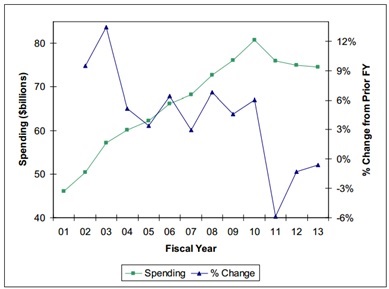Since 2009 the federal government started the process of replacing local computers with cloud platforms. A recent report from the Congressional Research Service (CRS) provides an interesting view into the progress of these investments. It reveals the benefits that public agencies gain when using cloud services and the barriers they face when making the transition.
Advantages of Cloud Computing
Cloud computers are superior to locally-run data centers for a variety of reasons. The CRS report identifies six specific cloud benefits:
- Cost– Cloud computer platforms use resources more efficiently than local servers. An organization that uses local Information Technology (IT) must invest in the infrastructure to support computer systems at times of peak demand. However, most times companies or government agencies require only a fraction of that computing power. Cloud computing allows organizations to pay for all of the resources they need and avoid costly investments in rarely used local IT systems.
- Energy Efficiency– Cloud computing data centers benefit from economies of scale to run more efficiently than local servers. In some cases this can result in huge energy savings. For a large cloud computing center it also makes economic sense to invest in green energy sources like wind or solar for power.
- Availability– Cloud computing systems make it easy for any device with an Internet connection to access files or software. However, if a facility temporarily loses Internet access the files on cloud system are inaccessible. Alternatively, a locally administered IT system could function without Internet connectivity.
- Agility- Cloud systems can make it easier to upgrade operating systems and applications. The available computing power also means that memory intensive software packages are cost effective.
- Security– Cloud providing companies also have the financial resources to purchase the tools necessary to ensure that networks remain safe.
- Reliability– Cloud systems can save data onto multiple servers. If a single server goes down due to a cyberattack or another issue, the data is available on another server.
Government Investments in the Cloud
Determining the exact size of government cloud computing expenditures is difficult. Government spending on IT has increased every year from 2001 to 2013 when it reached a peak of $81 billion. In the three subsequent years it has decreased. Cloud computing expenditures likely represent a tiny fraction of that total. Market research firms have estimated that the federal government spends between $1.4 billion and $7 billion on cloud computers annually.
Trends in Total Federal Investment in Information Technology

Source: Congressional Research Service
Challenges for Migrating to the Cloud
The federal government has encountered several barriers in its plan to shift more functions to cloud platforms:
- High Federal Security Requirements- The government faces new advanced persistent threats routinely. System-wide security updates are necessary more often than for private sector organizations. The short update cycle provides a unique challenge to cloud providers.
- Adopting New Technologies– Government agencies have ingrained cultures that are slow to change. This shift from locally-based servers to the cloud can be slow and tedious for this reason.
- Ancillary Technologies– Cloud technologies are known for their flexibility. However, government agencies may lack the necessary IT infrastructure or speedy Internet connections that leverage the maximum potential of the cloud.
- Technical Know How- Cloud platforms require specialized knowledge to administer. Many government agencies lack the necessary experts to oversee a migration to the cloud.
- IT Expenditure- Migration to the cloud can involve expensive initial costs. Additional funding is necessary to facilitate the shift to the cloud.
The Future of the Government Cloud
An analysis of the costs and benefits of cloud migration uncover a few specific barriers that the federal government must overcome to earn the full value from new technologies. First, lawmakers must be willing to spend more now to save money later. Cloud systems are cheaper to run than local administered servers but the initial transition costs are high. Current funding levels, which are trending down, are too low to finance such a change. Privacy and security are also major challenges. Government servers host troves of data that Americans expect to remain private. Converting these systems to the cloud will require the government’s full confidence that cloud systems are at least as secure. New legislation is likely necessary to achieve the complimentary goals of privacy and security.
More TechTank posts available here



Commentary
Analyzing the Federal Government’s Use of the Cloud
February 9, 2015